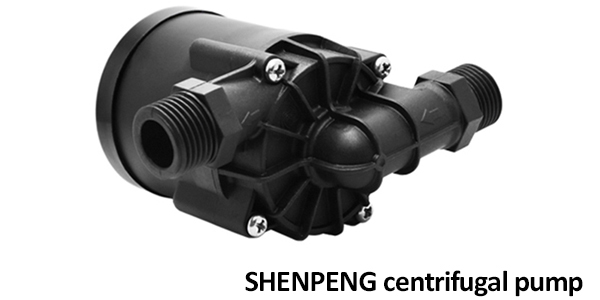Centrifugal pumps can be classified into single-stage pumps and multi-stage pumps according to the number of impellers. It is divided into low pressure pump, medium pressure pump and high pressure pump according to the working pressure. It can be divided into single side inlet pump and double side inlet pump according to impeller suction mode. It is divided into horizontal split pump and vertical joint surface pump according to the combination of pump casing. It is divided into horizontal pump and vertical pump according to the position of pump shaft. It can be divided into volute pump and guide vane pump according to impeller outlet mode. It can be divided into self filling centrifugal pump and suction centrifugal pump according to the installation height.
1. Classified by the number of impellers
(1) Single stage pump: there is only one impeller on the pump shaft.
(2) Multi stage pump: that is, there are two or more impellers on the pump shaft. At this time, the total head of the pump is the sum of the heads generated by n impellers.

2. Classified by working pressure
(1) Low pressure pump: the pressure is lower than 100m water column;
(2) Medium pressure pump: the pressure is between 100~650m water column;
(3) High pressure pump: the pressure is higher than 650m water column.
3. Classified by impeller suction mode
(1) Single side inlet pump: also known as single suction pump, that is, there is only one water inlet on the impeller;
(2) Double side inlet pump: also called double suction pump, that is, there is an inlet on both sides of the impeller. Its flow is twice as large as that of the single suction pump, which can be approximately regarded as two single suction pump impellers placed back-to-back together.
4. Classification according to pump casing combination
(1) Horizontal split pump: that is, there is a joint on the horizontal plane passing through the axis line.
(2) Vertical junction surface pump: that is, the junction surface is perpendicular to the axis line.
5. Classified by pump shaft position
(1) Horizontal pump: the pump shaft is horizontal.
(2) Vertical pump: the pump shaft is in a vertical position.
6. Classification according to impeller outlet mode
(1) Volute pump: after the water comes out of the impeller, it directly enters the pump casing with spiral shape.
(2) Guide vane pump: after the water comes out of the impeller, it enters the guide vane set outside it, and then enters the next stage or flows into the outlet pipe.
7. Classification by installation height
(1) Self filling centrifugal pump: the pump shaft is lower than the surface of the suction pool, so it can be started automatically without water filling.
(2) Suction centrifugal pump (non self filling centrifugal pump): the pump shaft is higher than the surface of the suction pool. Before starting, it is necessary to fill the pump housing and suction pipe with water first, and then drive the motor to make the impeller rotate at a high speed. The water is thrown out of the impeller under the centrifugal force, forming a negative pressure in the center of the impeller. The water in the suction pool enters the impeller under the atmospheric pressure, and is thrown out of the impeller into the pressurized water pipe under the action of the high-speed rotating impeller.
In addition, it can also be classified according to the use, such as oil pump, water pump, condensate pump, ash discharge pump, circulating water pump, etc.
classification of pump,mechanically actuated centrifugal pump,operating principle of centrifugal pump,Centrifugal pump application,specific speed of centrifugal pump,components of centrifugal pump,introduction of centrifugal pump,velocity triangle of centrifugal pump
Address:No.30, Dapu lndustrial Street, Changping, Dongguan, Guangdong, China
Tel: +86-186 7628 8117